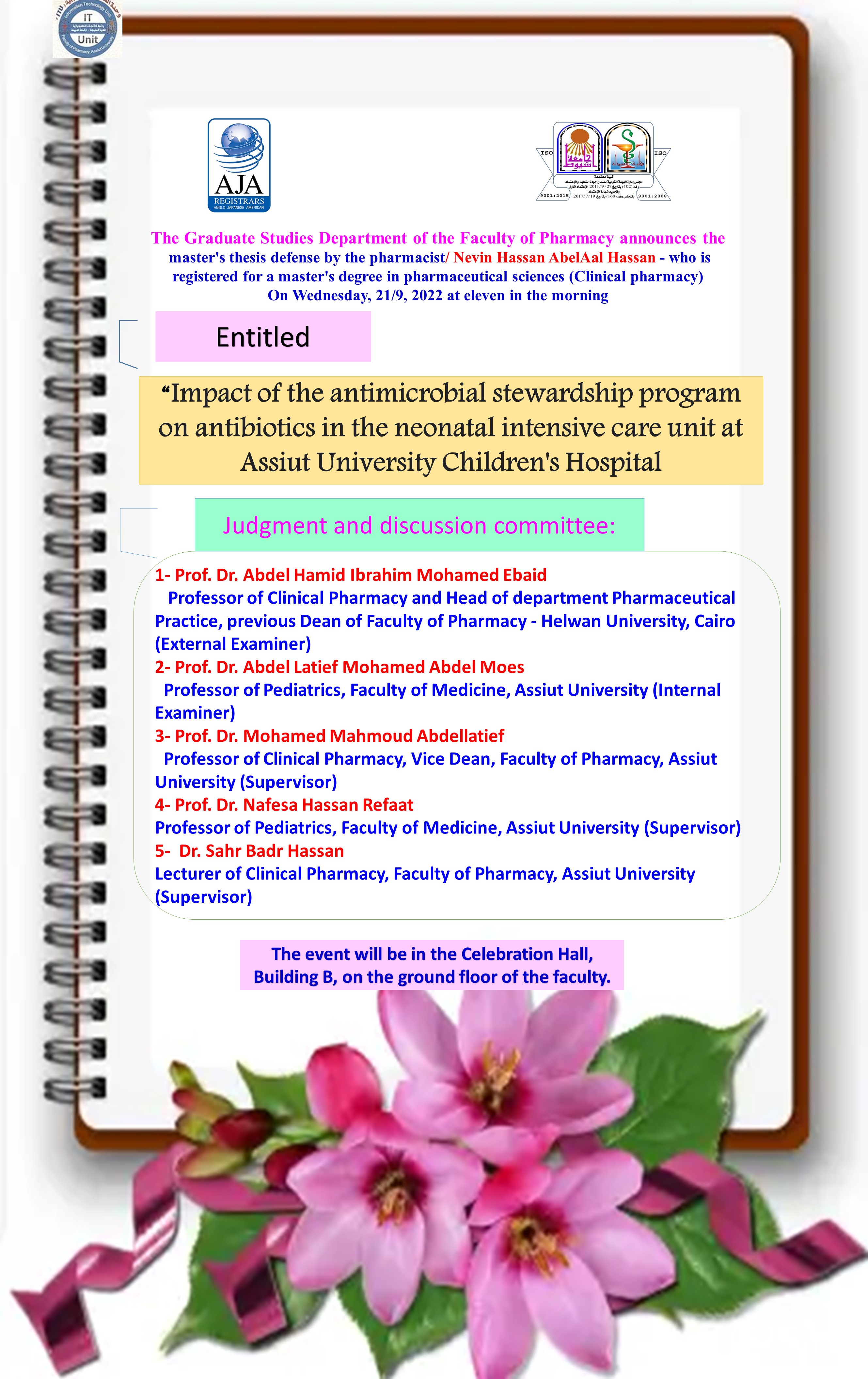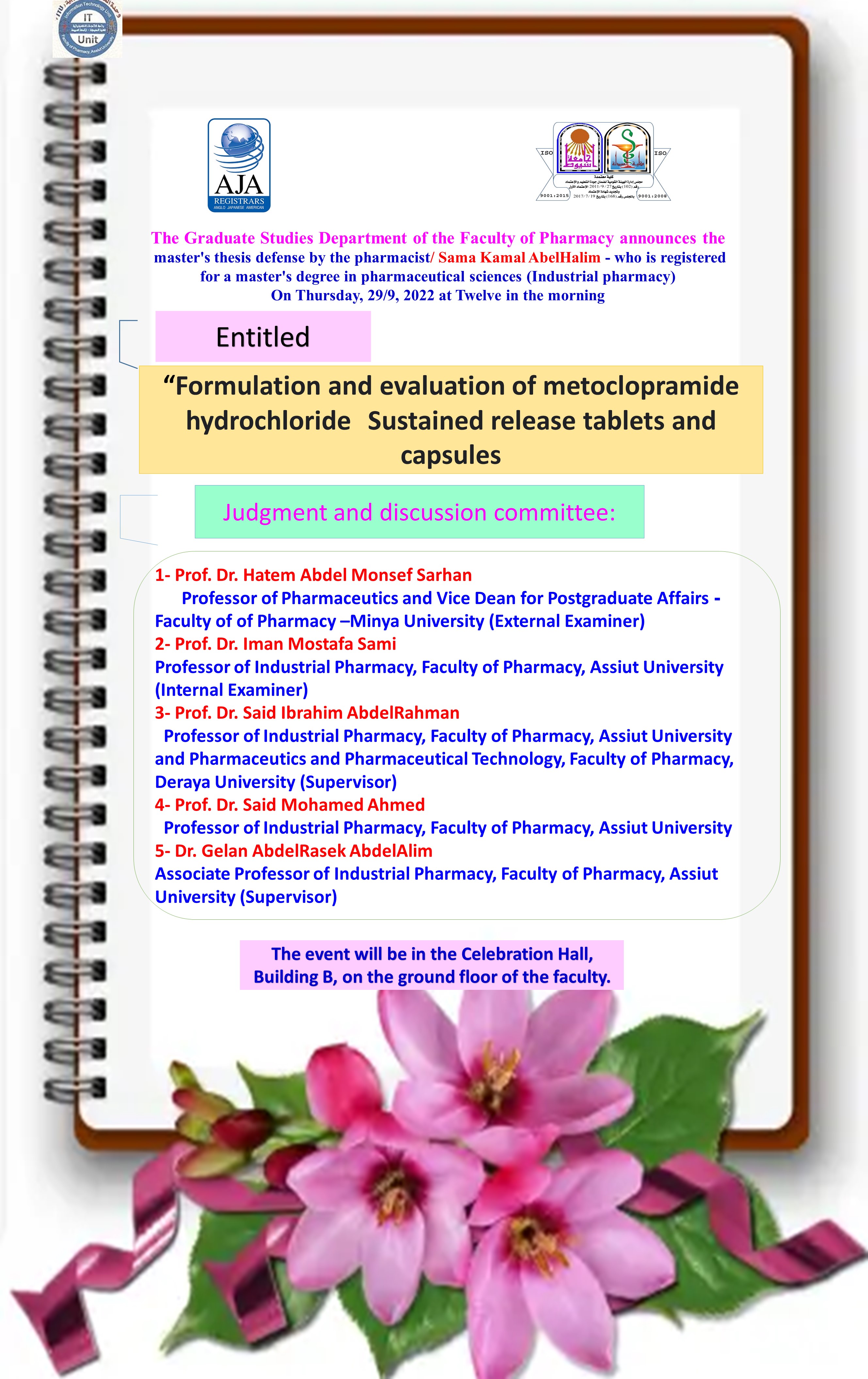Meeting of the Council of the Medicinal Chemistry Department, Faculty of Pharmacy on Tuesday, October 4, 2022 at 10:00 AM

God willing, The Medicinal Chemistry Department Council will hold its regular monthly meeting number (455) on Tuesday, October 4, 2022 at 10:00 AM
In The Department Library












